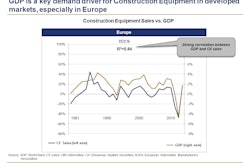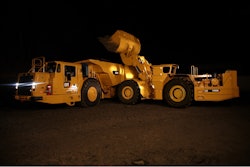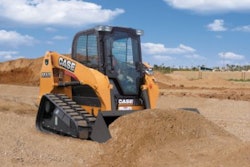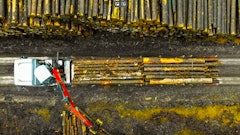Construction equipment manufacturers around the globe will see significant growth over the next few years, as massive infrastructure projects will be required to satisfy population growth and expansion of the middle class in emerging markets. This will cause the industry overall to expand sales at a compounded annual growth rate (CAGR) of 6.3% into 2015 – driven by demand in China, North America and India. That’s according to the AlixPartners Global Construction Equipment Industry Outlook, released by AlixPartners, the global business-advisory firm.
Demand in China remains the largest single factor affecting the global industry, as 60% of all global construction equipment sales are in China – led largely by Chinese original equipment manufacturers (OEMs). This trend looks to continue, as key local players are performing well financially and middle-class growth in China brings with it a demand for public projects like better roads, schools, water systems and other infrastructure.
“For the most part, the global OEMs’ fundamentals remain extremely strong, and we expect to see solid growth from them over the next several years,” says Francesco Barosi, managing director in AlixPartners’ Heavy Equipment practice. “Optimizing investments and resources to develop global products, while still meeting regional requirements, remains a challenge. But, it’s one we think they will meet in the next few years.”
Despite the recent slowing of China’s overall GDP, its construction equipment sales revenue growth is still expected to far outpace the global industry trends and grow at a CAGR of upwards of 33% into 2015, according to the AlixPartners report.
While macro-economic factors like rising populations and urbanization provide strong long-term fundamentals for the industry, construction OEMs will need to be increasingly nimble as new entrants in new markets grow, says the study. Global demand for heavy construction machinery such as excavators, loaders and dump trucks remains strongly correlated to local GDP, and tied to government-backed infrastructure projects. This poses significant challenges for OEMs as they seek to balance projects in fast-growing emerging markets versus ongoing work in slower-growing developed markets – especially Europe.
The amount of M&A has been - and is expected to remain – high, mostly driven by the emergence of strong, new Chinese players; their expansion into mature markets; the fragmentation of that market; and their need for innovation and brand-building.
“M&A is spreading into emerging markets, and new entrants are attempting to enter the developed markets by acquiring established brands,” says Barosi. “More mergers do suggest a vibrant sector, but they also bring their share of challenges, most notably effective integration needed to realize full synergies.”
The Chinese market remains dominated by local players – especially compared to the European and North American markets, which are dominated by global players including Caterpillar, Manitowoc and Komatsu. Chinese M&A is also expected to remain high -- driven by the emergence of local players, their expansion into mature markets, and their need for innovation and brand-building.
While growth in China and other emerging markets will continue to dominate the global construction equipment industry, the study sees growth in developed markets as well. Much of this growth will be due to new emissions standards, which will require significant R&D in these markets and will likely lead to demand for replacement vehicles with a better environmental footprint.
In general, the most important single factor driving the industry’s growth is that the world population continues to grow. As it does, there will be more and more call for the kinds of infrastructure projects that employ heavy construction equipment, the study says.
Global population is anticipated to grow by 1.3 billion people by 2030, which will drive demand for both infrastructure and residential construction. An incremental $500 billion annually is expected to be spent on infrastructure through 2014, which should drive demand for construction equipment. Just the so-called BRIC nations (Brazil, Russia, India and China) are expected to increase their investments by $220 billion annually, or 44% of the projected growth in infrastructure spending globally.
“It is imperative for construction equipment manufacturers to position themselves to benefit from this population explosion in emerging markets,” says Carlos Thome, director in AlixPartners’ Heavy Equipment practice. “What’s more, the middle class globally is expected to grow to 3.3 billion by 2020 versus 1.8 billion in 2009, mostly driven by Latin America and Asia.”














![Hcm Ax Landcros Press Release[32] jpg](https://img.oemoffhighway.com/mindful/acbm/workspaces/default/uploads/2025/11/hcmaxlandcros-press-release32jpg.mAEgsolr89.jpg?ar=16%3A9&auto=format%2Ccompress&fit=crop&h=135&q=70&w=240)




